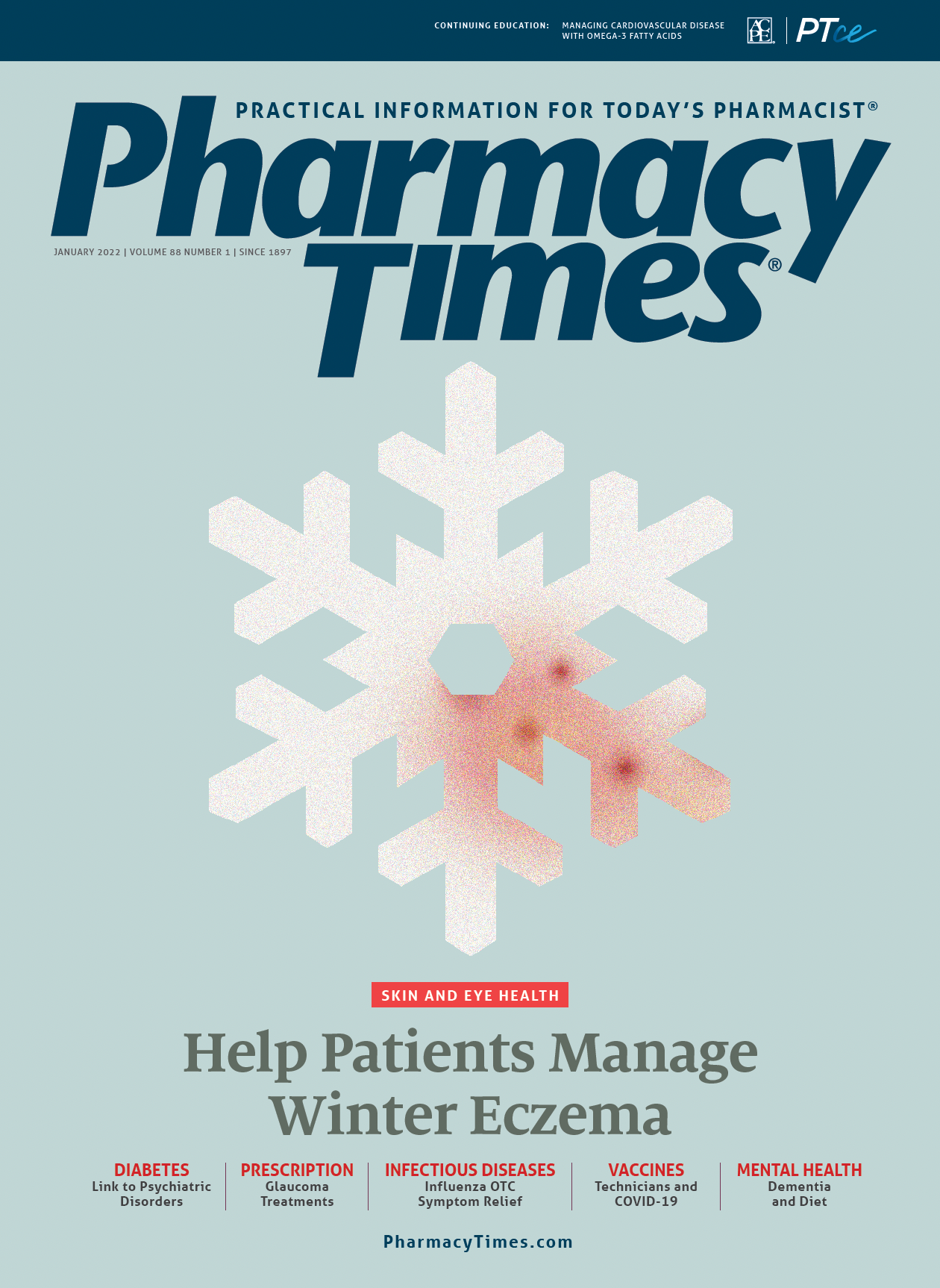Publication
Article
Pharmacy Times
Treatments for Thyroid Disease Are Generally Effective and Safe
Author(s):
Pharmacists can offer guidance on proper use of therapies and encourage adherence to regimens.
An estimated 20 million Americans have some form of thyroid disorder, and more than 12% of the US population will develop a thyroid condition, according to the American Thyroid Association.1 Although thyroid disease can affect anyone, women are 5 to 8 times more likely to experience problems, and 1 in 8 will develop a thyroid disorder.1,2 Thyroid disease is often chronic, and pharmacists are in a unique position—in collaboration with providers—to educate patients about symptom identification, treatment, and appropriate medication use.
DISEASE OVERVIEW
The thyroid gland—a small, butterfly-shaped organ—sits at the base of the neck and releases and controls 2 main thyroid hormones, thyroxine and triiodothyronine.2 Thyroid hormones regulate the body’s metabolism, affecting critical functions such as digestion, energy level, growth, heart rate, and heat production.2,3
In hypothyroid disease, the thyroid gland releases inadequate amounts of thyroid hormone. Hashimoto thyroiditis is the most common cause of hypothyroidism; however, there are others.4
In hyperthyroid disease, the thyroid gland produces excess thyroid hormone. Graves disease accounts for most cases of hyperthyroidism; however, other causes exist.2,5 Other thyroid-related health issues include goiter, thyroid cancer, thyroid eye disease, thyroiditis, and thyroid nodules.2,6
RISK FACTORS
Thyroid disease can affect anyone, but certain factors increase the risk.2 These include being female, older than aged 60 years, or taking medications that affect thyroid functions, as well as having a family history of thyroid disease or a history of treatments such as radiation or thyroidectomy.
SYMPTOMS
Undiagnosed and untreated thyroid disease has consequences, putting patients at risk of conditions such as cardiovascular and fertility problems and osteoporosis.1 Thyroid disease symptoms may be similar to those of other conditions. Pharmacists can educate patients concerning identification of symptoms and referral to a physician. Doctors make a conclusive diagnosis based on blood levels of thyroid stimulating hormone (TSH) and free thyroxine.7 The Table2,4-6,8,9 outlines thyroid conditions with associated symptoms and treatments.

PHARMACIST COUNSELING POINTS
Pharmacologic treatment of thyroid disease is largely effective and safe. Pharmacists can counsel patients about proper medication usage, educate them on existing and new medications, and encourage adherence to medication therapy.4,10,11 For instance, pharmacists should advise patients that certain foods and medications, including dietary supplements and vitamins, can affect levothyroxine absorption. Patients must take levothyroxine on an empty stomach with a full glass of water, 30 minutes to 1 hour before breakfast and 4 hours before or after other medications.
In addition, pharmacists should be aware of the clinical and pharmacologic implications of levothyroxine substitution and maintain patients on the same brand of the medication. If a substitution is made, the pharmacy team must inform the prescriber, because patients will need to be reevaluated and sent for new laboratory work to assess serum TSH. Finally, pharmacists must advise patients that thyroid disease is often chronic, requiring lifelong therapy, and express the need for therapeutic drug monitoring.
Yvonne Riley-Poku, PharmD, is a registered pharmacist and recent graduate of the University of Connecticut School of Pharmacy's Medical Writing Certificate program.
REFERENCES
1. General information/press room. American Thyroid Association. Accessed November 23, 2021. https://www.thyroid.org/media-main/press-room/
2. Thyroid disease. Cleveland Clinic. Updated April 19, 2020. Accessed November 23, 2021. https://my.clevelandclinic.org/health/diseases/8541-thyroid-disease
3. Hershman JM. Overview of the thyroid gland. Merck Manual Consumer Version. Updated October 2020. Accessed November 23, 2021. https://www.merckmanuals.com/home/hormonal-and-metabolic-disorders/thyroid-gland-disorders/overview-of-the-thyroid-gland
4. Hashimoto’s disease. Mayo Clinic. February 11, 2020. Accessed November 23, 2021. https://www.mayoclinic.org/diseases-conditions/hashimotos-disease/symptoms-causes/syc-20351855
5. Kravets I. Hyperthyroidism: diagnosis and treatment. Am Fam Physician. 2016;93(5):363-370.
6. Douglas RS, Kahaly GJ, Patel A. Teprotumumab for the treatment of active thyroid eye disease. N Engl J Med. 2020;382(4):341-352. doi:10.1056/NEJMoa1910434
7. Wilson SA, Stem LA, Bruehlman RD. Hypothyroidism: diagnosis and treatment. Am Fam Physician. 2021;103(10):605-613.
8. Thyroid eye disease. National Organization for Rare Disorders. Accessed November 23, 2021. https://rarediseases.org/rare-diseases/thyroid-eye-disease/
9. FDA approves first treatment for thyroid eye disease. News release. FDA. January 21, 2020. Accessed November 23, 2021. https://www.fda.gov/news-events/press-announcements/fda-approves-firsttreatment-thyroid-eye-disease
10. Benvenga S, Carlé A. Levothyroxine formulations: pharmacological and clinical implications of generic substitution. Adv Ther. 2019;36(suppl 2):59-71. doi:10.1007/s12325-019-01079-1
11. Levothyroxine (oral route). Mayo Clinic. Updated August 1, 2021. Accessed November 23, 2021. https://www.mayoclinic.org/drugs-supplements/levothyroxine-oral-route/proper-use/drg-20072133

Newsletter
Stay informed on drug updates, treatment guidelines, and pharmacy practice trends—subscribe to Pharmacy Times for weekly clinical insights.





